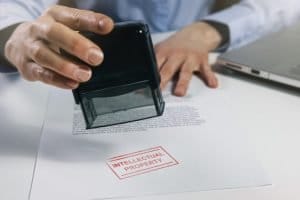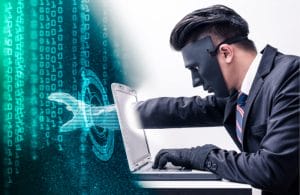The following article explores Intellectual Property Theft Examples.
The 21st century has ushered in an era of revolutionary technologies and digital evolution that are now integral parts of our lives.
With that, however, comes the increased risk and frequency of intellectual property (IP) theft.
The team at Powerhouse Forensics is all too familiar with this particular form of digital crime, as our company is an experienced IP theft investigator in Houston, Texas.
In this article, we’ll look at some compelling examples of intellectual property theft.

What is Intellectual Property Theft?
Before delving into specific examples, it’s important to clearly define intellectual property theft.
IP theft is the unauthorized use of someone else’s intellectual property. This can be in the form of patents, trade secrets, copyrights, or trademarks.
In the digital age, IP theft has become increasingly common, significantly impacting businesses and individuals worldwide.

Intellectual Property Theft Examples
Case Study 1: The Nortel Networks Breach
One of the most significant instances of intellectual property theft was the downfall of Canada’s Nortel Networks.
An internal investigation uncovered a breach that extended for almost a decade, with the company’s top-level research, business plans, and employee emails being systematically stolen.
Outcome: The IP theft from Nortel Networks led to its demise in 2009. Competitors, armed with the company’s intellectual property, could replicate their products and strategies, leading to a significant market disadvantage for Nortel.
Case Study 2: The Wind Turbine Technology Theft
In 2018, a Chinese company was convicted of stealing trade secrets from the U.S. company AMSC.
The stolen information was related to wind turbine technology. By secretly accessing AMSC’s software codes, the Chinese company was able to manufacture duplicate products, causing AMSC to lose over $1 billion.
Outcome: The loss of this intellectual property not only cost AMSC monetarily but also resulted in the layoff of more than half of its employees. It underscored the potential devastation IP theft could bring to any business, regardless of its size or sector.
Case Study 3: The Waymo vs. Uber Dispute
The self-driving car industry has seen its share of IP theft cases, one of which involved Waymo (a subsidiary of Alphabet, Google’s parent company) and Uber.
Waymo accused one of its ex-employees of stealing trade secrets related to their autonomous vehicle technology, which was allegedly used by Uber.
Outcome: The case was settled in 2018, with Uber agreeing to a settlement that included a significant equity payout. It was a clear demonstration of how seriously courts are beginning to take IP theft cases and how costly such incidents could be for businesses involved.
Case Study 4: Theft of the Coca-Cola Recipe
An interesting case of attempted IP theft involved the secret recipe for Coca-Cola.
In 2006, three individuals were arrested for attempting to sell Coca-Cola’s secret formula to its main competitor, PepsiCo.
Outcome: PepsiCo, however, reported the incident to Coca-Cola and cooperated with the authorities, leading to the culprits’ arrest. This case is an excellent example of competitors respecting each other’s intellectual property, showing that IP protection is a shared concern across industries.
Case Study 5: The Samsung-Apple Patent Dispute
Arguably one of the most high-profile cases of IP theft was the patent dispute between tech giants Samsung and Apple.
Apple sued Samsung in 2011, alleging that several of Samsung’s Android phones and tablets infringed on Apple’s intellectual property, including its patents, trademarks, and user interface.
Outcome: After a protracted legal battle, a U.S. court ordered Samsung to pay Apple over $1 billion in damages in 2012. The case shed light on the critical importance of IP protection in the tech industry and set a precedent for similar legal disputes in the future.

Intellectual Property Theft Examples – Final Thoughts
These intellectual property theft examples underscore how critical it is for businesses to protect their intellectual property diligently.
Whether it’s trade secrets, patented technology, or a coveted recipe, the theft of these intangible assets can result in significant financial losses and irreversible damage to a company’s competitive advantage.
Contact Powerhouse Forensics for IP Theft Prevention
At Powerhouse Forensics, we leverage our deep expertise in digital forensics to help you identify potential threats, protect your assets, and take appropriate action if your intellectual property rights have been violated.
Our team of seasoned professionals is committed to providing you with the knowledge, tools, and services needed to safeguard your intellectual property in today’s digital landscape.
Intellectual Property Theft Examples FAQs
To further enlighten our readers on this topic, we’ve answered some common questions we encounter in our work:
What is the most common type of IP theft?
The most common type of IP theft involves trade secrets, such as proprietary business methods and techniques. However, patent infringement, copyright infringement, and trademark counterfeiting are also quite common.
How can a company protect its intellectual property?
Companies can protect their intellectual property by ensuring they have proper legal protections in place (like patents, copyrights, and trademarks), implementing robust security measures, regularly monitoring for infringements, and taking swift legal action when an infringement is detected.
What is the role of digital forensics in combating IP theft?
Digital forensics plays a critical role in combating IP theft. Experts in this field can detect and analyze digital evidence of IP theft, identify perpetrators, and provide essential evidence in legal proceedings.
How does Powerhouse Forensics help in protecting against IP theft?
At Powerhouse Forensics, we employ advanced digital forensic techniques to help businesses detect and prevent IP theft. This includes analyzing data to identify potential breaches, tracing digital footprints of suspected theft, and providing crucial evidence to support legal actions.
Is IP theft a criminal offense?
Yes, intellectual property theft is a serious criminal offense. Depending on the jurisdiction and the nature and scale of the theft, offenders can face substantial fines, imprisonment, or both.
Intellectual property is the backbone of innovation and competitive advantage in business. Its theft can have far-reaching consequences, as illustrated by the examples we’ve explored. Protecting your IP should, therefore, be a priority – and Powerhouse Forensics is here to help. Contact us today for more information on our digital forensics services.